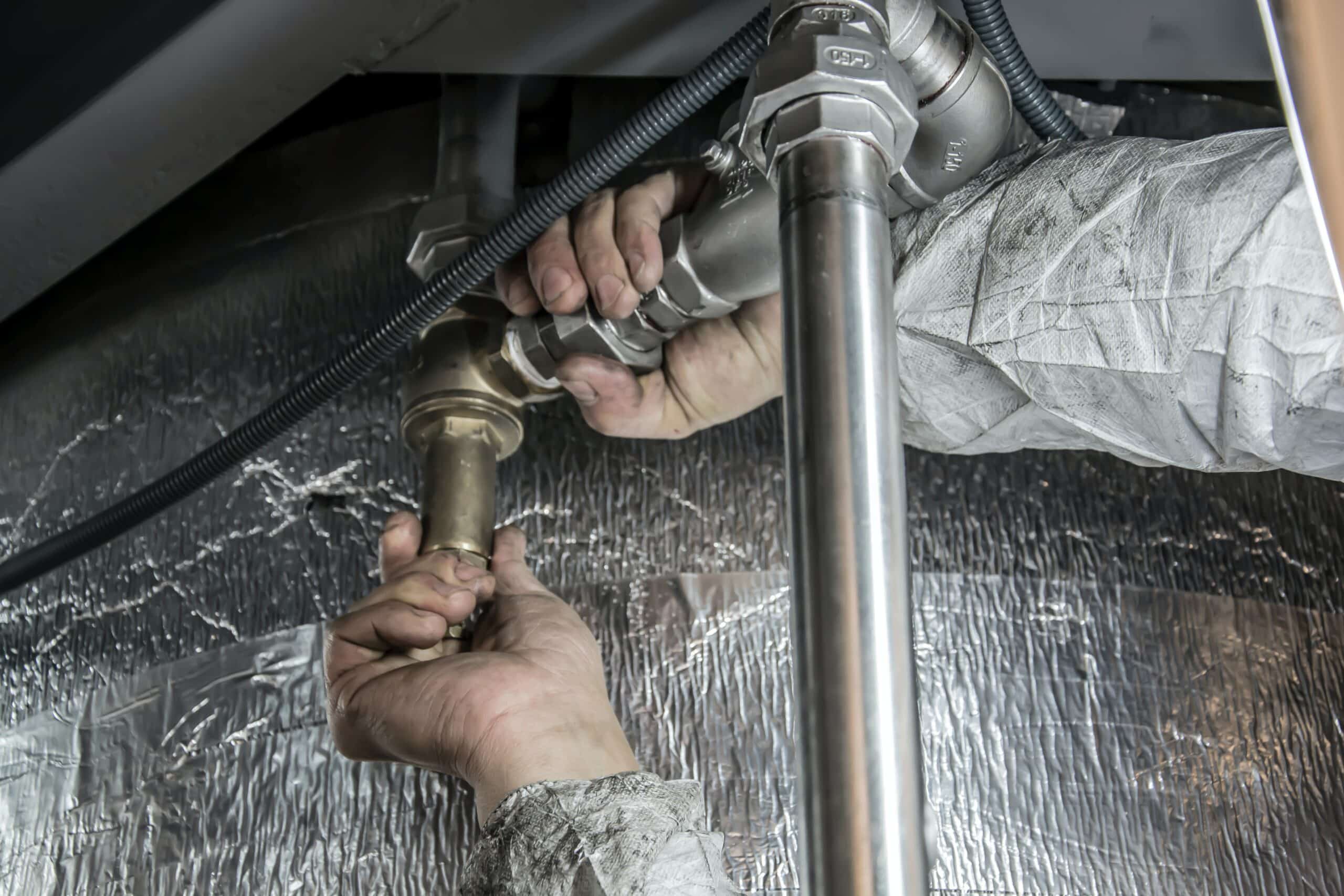What are your ideas on The Future of Plumbing: Trends and Innovations to Watch?

Intro
The plumbing sector is undertaking a transformative phase driven by technological developments and expanding concerns for sustainability and efficiency. This post checks out arising patterns and technologies shaping the future of pipes.
Regulatory Landscape
Regulative structures play an essential duty in shaping the adoption of pipes developments, with requirements and codes governing every little thing from water efficiency to product safety. As technologies continue to advance, regulative bodies must adapt to make certain consumer security and ecological stewardship.
Future Outlook
The future of plumbing is identified by continued innovation and assimilation with other fields such as IoT, renewable energy, and structure automation. By accepting sustainable methods, leveraging arising modern technologies, and focusing on user-centric layout, the pipes market is poised to attend to the developing needs of society while reducing its environmental impact.
Increased Truth in Plumbing
Augmented Fact (AR) innovation is changing plumbing by providing technicians with real-time aesthetic assistance for repairing and repair jobs. AR-enabled clever glasses or mobile applications overlay electronic details onto the physical atmosphere, aiding plumbing professionals imagine pipe formats, recognize concealed leakages, and execute repair work with precision.
Influence of 3D Printing
The arrival of 3D printing has introduced brand-new possibilities in manufacturing plumbing elements. From custom-designed fixtures to complex pipe fittings, 3D printing allows for fast prototyping and on-demand production, lowering lead times and enabling greater personalization in pipes layout.
Health And Wellness Features
In feedback to increased concerns for health and wellness, pipes components are integrating features such as antimicrobial surface areas, touchless operation, and self-cleaning systems. These technologies not just improve health but also promote customer comfort and convenience.
Hygiene-focused Components
Touchless faucets, self-sanitizing commodes, and antimicrobial surface areas are becoming increasingly common in household and commercial settings, decreasing the danger of germ transmission and advertising a cleaner, much healthier atmosphere.
Water Quality Monitoring
Innovations in water quality tracking technologies enable home owners to keep an eye on the purity and safety of their water supply in real-time. Smart water top quality sensors can discover impurities, pH levels, and temperature variants, encouraging individuals to take aggressive procedures to make sure water security.
Remote Pipes Providers
Remote diagnostics and virtual help are reinventing the way pipes solutions are supplied. Through video clip conferencing and remote access technologies, plumbing technicians can troubleshoot problems, offer support for DIY fixings, and also do remote assessments, offering better accessibility and comfort to home owners.
Difficulties and Opportunities
While plumbing developments hold tremendous promise, they also present obstacles such as data privacy problems, regulatory conformity, and the need for labor force training. Resolving these difficulties calls for collaboration between industry stakeholders and governing bodies to guarantee risk-free and accountable application of brand-new modern technologies.
Smart Plumbing Equipments
Including smart modern technology into pipes systems makes it possible for remote monitoring, leakage discovery, and automated upkeep. Smart sensors and IoT (Web of Points) tools allow homeowners and plumbings to keep track of water usage and discover issues in real-time, causing a lot more effective source management and proactive upkeep.
Water Performance Solutions
With raising focus on water conservation, innovative solutions are being established to reduce water wastage in plumbing systems. High-efficiency fixtures, greywater recycling systems, and clever watering controllers are among the innovations aiding consumers lower their water footprint while maintaining comfort and convenience.
Sustainable Products
The shift in the direction of sustainability encompasses plumbing products, with a growing preference for environmentally friendly options. Naturally degradable piping materials, such as PEX (cross-linked polyethylene) and HDPE (high-density polyethylene), offer resilience and resistance to corrosion without jeopardizing environmental integrity.
Anticipating Maintenance
Predictive maintenance methods leverage information analytics and machine learning algorithms to prepare for and stop plumbing concerns before they happen. By examining historical data and efficiency metrics, anticipating upkeep algorithms can recognize patterns and anomalies, enabling positive interventions to prevent expensive repair services and disruptions.
Final thought
Finally, the future of plumbing is defined by a merging of modern technology, sustainability, and user-centric layout. By accepting clever options, lasting materials, and proactive maintenance methods, the plumbing industry can boost effectiveness, advertise safety and security, and add to a more sustainable future.
The Future of Plumbing: Trends and Innovations to Watch
Introduction to Future Plumbing Trends
The future of plumbing is being shaped by several key factors, including technological advancements, environmental concerns, and changing consumer expectations. These factors are driving the development of new products, services, and practices that enhance the efficiency, sustainability, and convenience of plumbing systems.
Key Trends and Innovations in Plumbing
Smart Plumbing Systems: The integration of smart technology into plumbing systems is transforming the way we manage water usage and detect issues. Smart leak detectors, automated water shut-off valves, and smart faucets are just a few examples of how technology is enhancing plumbing systems. These devices provide real-time data and remote control capabilities, allowing homeowners to monitor and manage their water usage more effectively. Water Conservation and Efficiency: With increasing concerns about water scarcity, there is a growing emphasis on water conservation and efficiency. Innovations such as low-flow fixtures, greywater recycling systems, and rainwater harvesting are becoming more popular. Plumbers are adopting these technologies to help customers reduce their water consumption and save on utility bills. Sustainable Materials: The use of sustainable materials in plumbing systems is gaining traction. This includes the adoption of recyclable and biodegradable materials, as well as the use of non-toxic and eco-friendly products. Sustainable materials help reduce the environmental impact of plumbing systems and promote long-term sustainability. Energy-Efficient Water Heaters: Advances in water heating technology are leading to the development of more energy-efficient systems. Tankless water heaters, solar water heaters, and heat pump water heaters are becoming more prevalent. These systems offer significant energy savings and reduce the carbon footprint of homes and businesses. Trenchless Technology: Trenchless technology is revolutionizing the way plumbing repairs and installations are conducted. This method allows for the repair or replacement of pipes without extensive excavation, minimizing disruption and reducing costs. Techniques such as pipe bursting and cured-in-place pipe (CIPP) lining are gaining popularity. Health and Safety: The focus on health and safety is driving innovations in plumbing systems. Touchless faucets and fixtures, antimicrobial materials, and improved water filtration systems are being developed to enhance hygiene and protect public health. Plumbers are adopting these innovations to meet the growing demand for safer and healthier plumbing solutions. Remote Diagnostics and Monitoring: The ability to diagnose and monitor plumbing systems remotely is becoming increasingly important. Remote diagnostic tools and sensors allow plumbers to identify issues and perform maintenance without the need for on-site visits. This enhances efficiency and reduces the need for costly emergency repairs. Impact of Future Trends on the Plumbing Industry
Enhanced Efficiency: The adoption of smart technology and energy-efficient systems will enhance the efficiency of plumbing systems. This will lead to reduced water and energy consumption, lower utility bills, and improved performance. Sustainability: The focus on sustainability will drive the development and adoption of eco-friendly plumbing solutions. This will contribute to the conservation of natural resources, reduction of waste, and protection of the environment. Improved Customer Experience: The integration of technology and innovative solutions will improve the customer experience. Homeowners will have greater control over their plumbing systems, access to real-time data, and the ability to manage their water usage more effectively. Increased Demand for Skilled Plumbers: The adoption of new technologies and materials will require plumbers to acquire new skills and expertise. There will be an increased demand for skilled plumbers who are knowledgeable about the latest trends and innovations. Cost Savings: The use of efficient and sustainable plumbing solutions will result in cost savings for both homeowners and businesses. Reduced water and energy consumption, lower maintenance costs, and fewer emergency repairs will contribute to overall affordability. Preparing for the Future of Plumbing
Stay Informed: Keep up-to-date with the latest trends and innovations in the plumbing industry. Attend industry conferences, participate in training programs, and engage with manufacturers to stay informed. Invest in Training: Ensure that you and your team are trained in the latest technologies and installation techniques. This will enable you to offer cutting-edge solutions to your customers and stay competitive in the market. Promote Sustainable Solutions: Highlight the benefits of eco-friendly and energy-efficient plumbing solutions to your customers. Educate them about the advantages of adopting sustainable practices and products. Leverage Technology: Embrace smart technology and remote diagnostic tools to enhance your services. Offer remote monitoring and maintenance options to provide added convenience and value to your customers. Collaborate with Manufacturers: Partner with manufacturers of innovative plumbing products to gain access to the latest solutions and technical support. This can also provide opportunities for joint marketing efforts. Focus on Customer Education: Educate your customers about the benefits and functionality of new plumbing technologies. Provide guidance on how to use smart systems and maintain sustainable plumbing solutions. Conclusion
The future of plumbing is being shaped by exciting trends and innovations that promise to enhance efficiency, sustainability, and convenience. By staying informed and embracing these changes, plumbers can provide superior services to their customers and contribute to a more sustainable future. The adoption of smart technology, sustainable materials, and energy-efficient systems will drive the evolution of the plumbing industry, creating new opportunities and challenges. By preparing for the future, plumbers can ensure their success in a rapidly changing market.

As an avid person who reads on The Future of Plumbing: Trends and Innovations to Watch, I think sharing that piece of writing was smart. Sharing is caring. Helping others is fun. I enjoy your readership.
Click For More Info